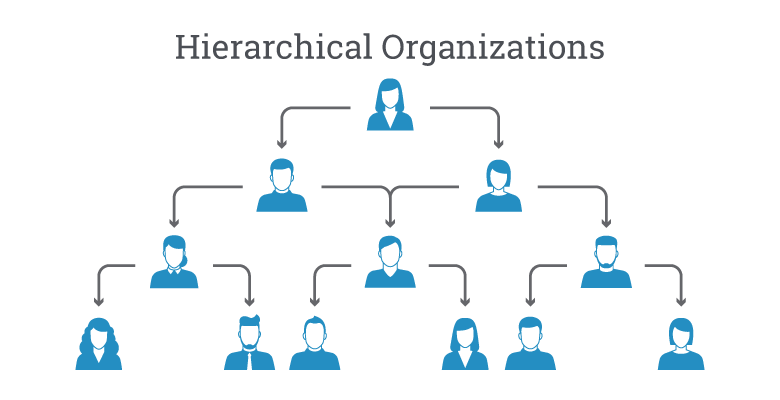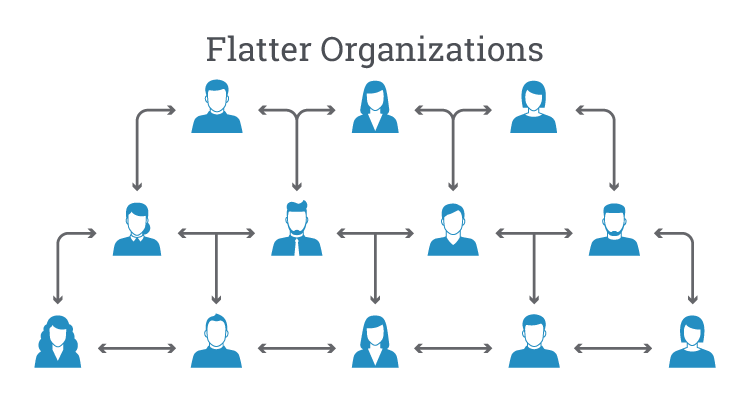We know creating the ideal digital marketing team structure can be confusing, daunting, and complex.
Not to mention, the structure of your digital marketing team can make or break the performance of your company.
But after tackling our internal hiring process, the biggest lesson I’ve learned is the importance of having an established team structure to fill.
I’ve compiled hours of research from some of the best marketing sources in the world to bring you my go-to advice on properly structuring your digital team.
In this three part series, I will teach you how to create the best digital marketing team structure based on the size of your business.
But first, here are three reasons on why your company or business needs an effective digital team structure to maximize return on investment.
- U.S. adults spend over 12 hours each day consuming media. TV and Radio time is going down as time on laptops and mobile phones increases. Care to guess what is going to happen in the next few years?
- The smallest change in your marketing funnel will make the biggest difference in your conversions and ROI. For example, a financial company increased form completions by 111.6% just by making tiny headline and copy changes.
- Say goodbye to the days of going to a tradeshow, shaking some hands, and hoping they remember to buy. Say hello to the days of inbound marketing – people come to you and buy from you based on the value you provide online.
The best part?
You can track their every move online through analytics and know exactly where potential customers are in the funnel.
Now that you know why you need digital marketing, we will start off by covering the different options for structuring an online marketing organization. And then focus on what small businesses should look for when hiring their first marketer.
According to the best-selling business author Dan Pink, there are 3 factors that lead to better employee performance and the success of your business: Autonomy, Mastery, and Purpose. Make sure you infuse each of these into your team’s structure.
Autonomy means having a process that allows people to be self-directed and free of micro-management
Mastery means having a process that allows people to achieve a state of flow
Purpose means having a transcendent purpose beyond just making money
Take a closer look at the traditional organizational hierarchy:
 So, what does the ideal digital marketing department structure look like?
So, what does the ideal digital marketing department structure look like?

Instead, consider a lateral track with fewer upward layers of hierarchy. You’ll pave the way for a more inclusive work environment.
Flatter organizational structures can eliminate the traditionally slow-moving chains of command. With less barriers for communication, responsibility is spread among team members and allows for changes to be rapidly agreed.
To go along with this, center your team around a BHAG. A BHAG is a term popularized by Jim Collins and his best-selling book Good To Great.
What’s a BHAG? It’s a big, hairy, audacious goal that’s measurable and represents whether or not you’re moving towards a vision. An organization should focus on one goal and do it well.
Options for Creating Your Digital Marketing Team Structure
Option 1: Establish roles by function
Examples of functional roles include: Paid Search, Email Marketing, Creative, Content, Search Engine Optimization, and Social Media.
Michael Collins, SVP of Marketing at JW Player, said that he organizes his team by functional expertise. A functional formation helps combine the right mix of marketing functional expertise with product expertise.
Pros: Simple and scalable.Cons: Nowadays, many of these are cross-over roles.
Option 2: Divide to conquer
One example of a divisional breakdown is to group people by a left-brain team and a right-brain team.

A left-brained person is more logical and analytical. You can have one team that is great with data, logic, numbers, and tech.
A right-brained person is more creative and intuitive. The right brain team is one that uses it’s creative talent. These are the magicians that create awesome graphics and ads.
A manager should be put in place to keep both teams on track and properly working with each other.
Can’t decide between right and left? Consider another digital marketing organization structure, the 3-team structure:
A campaign-focused team: This team mostly spends it’s time designing, researching, building, and launching iterations of product and campaign.
A creative-focused team: This team spends it’s time on assisting with design, development, or marketing
An IT and Support team: This team is focused on areas related to database, finance, and customer service.
Pros: This method is great for companies with multiple products.Cons: It can be difficult to scale and you run the risk of duplicating resources.
Option 3: Organize by objective
The company Sweetspot Intelligence chose to organize departments by objective (acquisition or brand) rather than function (SEO, content, social, PPC) or category (paid, owned, earned).
Here’s an image of what they’ve done:

By doing this, Sweetspot reports that employees are more focused on the goal and fully understand their role. They are more likely to be effective because the goals are frequently outlined and reminded.
This also allows for more collaboration, which is crucial. Different job roles work together more and share their data through an integrated dashboard. KPIs and metrics for each profile are shared to achieve the same end goal for each department.
Pros: Centralized decision making. Highly efficient and adaptable in a rapidly changing environment.Cons: Objectives become siloed and you run the danger of duplicating activities.
Martin Moll, Head of European Marketing at Honda, said that there is no definitive answer for the best structure. He believes that an employee should have a “broad understanding of each campaign, know what to measure, be able to tell if targets are met, and how to integrate campaigns through different channels for optimization.”
He doesn’t emphasize who does what. It’s more important that the business is meeting its plan objectives.
Data-driven objectives can really work because they target and double down on what is already working. For example, Mei Lee, VP of marketing at J. Crew, wrote in the Harvard Business Review that if she learns a product is a top seller, she shifts her paid advertising to target relevant keywords and geography.
Small Businesses: Hiring Your First Marketer
If you have a smaller business without a digital marketing team, now is the time to start looking to fill those gaps. But be wary, digital marketers have a higher turnover rate than traditional employees.
To reduce turnover, you need to be smart in your hiring process.
So, what should you look for in your digital marketing team structure?
Here are some of the key things you should look for:
Content creation experience: do they have blogging, agency, or corporate content creation experience? Gold star!
Analytics: Excel, Google Analytics, and Hubspot experience are a huge plus. They don’t need to have advanced skills but a working knowledge would be great.
Digital literacy: How well do they understand the internet and how businesses can leverage it? Do they understand social media platforms like Facebook, Youtube, and LinkedIn? Do they use it themselves? Do they have personal platforms to prove it?
Campaign management: You will be hard pressed to find someone who is also skilled at Photoshop. But make sure to look for basic skills in Illustrator, Photoshop, or other graphics programs. Also, ideally, you want to find someone who has run campaigns across numerous channels. It can be as simple as an email campaign or a full Facebook Ads or Adwords campaign. An ideal candidate understands how the different parts of a marketing lifecycle campaign work together.
If you find folks that match the above qualifications, you’ll be well on your way to creating an effective digital marketing team structure.
Make sure to read the next blog post to ensure that you create the right digital marketing team roles so you can maximize your ROI.
by: Matt Freeland


